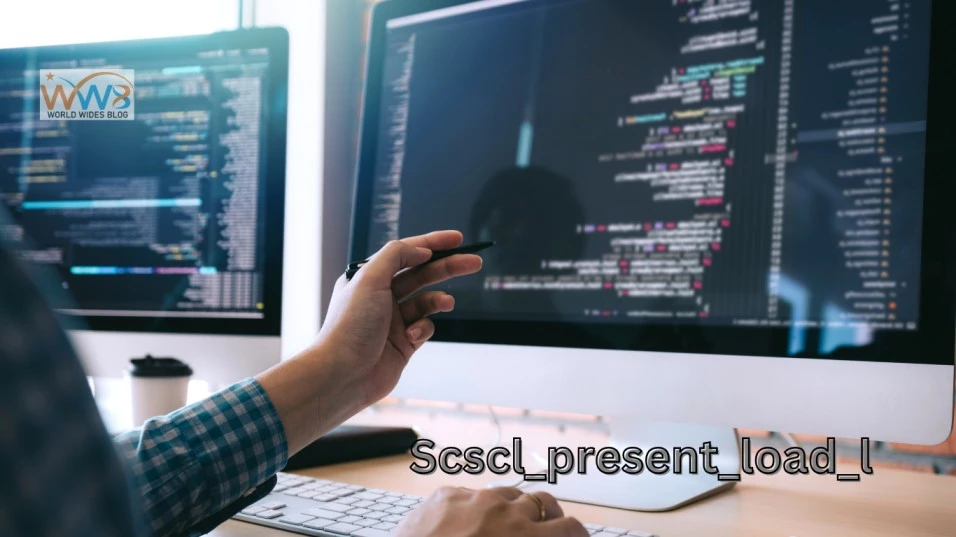Scscl_present_load_l is a critical parameter that significantly influences the performance and stability of modern systems. Understanding its nuances can help engineers and developers optimize their applications to handle varying load conditions efficiently.
This introduction will explore its importance, how it affects system operations, and the best practices for managing it effectively. By delving into the complexities of this parameter, readers will gain valuable insights into enhancing system reliability and preventing potential failures that could arise from improper load management.
What is the role of scscl_present_load_l in system architecture?
The role of scscl_present_load_l in system architecture is a critical parameter determining how much load a system can handle. This parameter is crucial for ensuring the system operates within its capacity and prevents overloads that could lead to performance degradation or system failures.
By monitoring and managing scscl_present_load_l, architects and engineers can optimize resource allocation, balance workloads, and maintain system stability, especially in environments with fluctuating demands. Proper configuration ensures the system can efficiently process tasks without compromising reliability.
How does scscl_present_load_l impact overall system performance?
scscl_present_load_l directly affects system performance by determining how much of the system’s resources are utilized to handle the current load.
If high, the system’s struggle to manage the load efficiently can lead to slower response times and degraded performance.
Proper management ensures the system operates within its optimal capacity, maintaining smooth and reliable performance even under varying load conditions.
Can optimizing scscl_present_load_l prevent unexpected system failures?
Yes, optimizing scscl_present_load_l can significantly reduce the risk of unexpected system failures.
By closely monitoring and adjusting it, you can ensure the system remains within safe operational limits, avoiding overload situations that could lead to crashes or failures.
Effective optimization helps maintain system stability and resilience by balancing the load and preventing resource exhaustion.
What are common challenges in managing scscl_present_load_l?
Common challenges include:
- Dynamic Load Variability: Fluctuating loads can make predicting and managing resource needs difficult.
- Resource Contention: A high load can cause resource competition, affecting performance.
- Scaling Complexity: Implementing and managing scaling strategies to handle load changes can be complex.
- Monitoring and Visibility: Requires sophisticated tools and configurations to gain accurate insights.
- Threshold Management: Setting appropriate thresholds for alerts and scaling actions is challenging.
- Balancing Trade-offs: Optimizing performance, cost, and resource utilization requires careful balancing.
- System Integration: Coordinating scscl_present_load_l management with other system components can be difficult.
- Predictive Analysis: Forecasting future load accurately based on current data can be challenging.
How does scscl_present_load_l relate to load-balancing strategies?
It is crucial for load-balancing strategies as it helps determine how to distribute workloads across multiple servers or instances. Effective load balancing relies on understanding the current load and its impact on system performance.
By monitoring scscl_present_load_l, load balancers can make informed decisions about routing traffic to ensure even distribution, prevent overloads on individual servers, and maintain optimal system performance.
Why is monitoring scscl_present_load_l crucial for developers?
Monitoring scscl_present_load_l is crucial for developers because it provides real-time insights into how well the system handles current workloads. This information helps developers identify potential performance issues, optimize resource allocation, and ensure the system remains stable and responsive. Proactive monitoring allows developers to address problems before they impact users, improve system reliability, and enhance overall user experience.
Can improper scscl_present_load_l settings lead to bottlenecks?
Yes, improper settings for scscl_present_load_l can lead to bottlenecks. If the load is managed effectively, it can be manageable for specific system components, causing delays, increased latency, and reduced performance. Bottlenecks occur when resources are overburdened or not allocated efficiently, resulting in degraded system performance and potential failures.
What best practices exist for configuring scscl_present_load_l?
Best practices for configuring scscl_present_load_l include:
- Continuous Monitoring: Use tools to monitor scscl_present_load_l in real-time.
- Define Thresholds: Set appropriate thresholds for alerts and scaling actions.
- Automated Scaling: Implement automated scaling mechanisms to adjust resources dynamically.
- Load Balancing: Use load balancing strategies to distribute workloads evenly.
- Capacity Planning: Regularly review and adjust capacity planning based on historical data.
- Performance Optimization: Continuously optimize system performance based on scscl_present_load_l data.
- Testing and Validation: Conduct stress and load testing to validate performance under varying loads.
- Documentation and Review: Maintain documentation and regularly review and update management strategies.
By following these best practices, you can effectively manage scscl_present_load_l and ensure your system performs optimally and remains reliable.
Why is scscl_present_load_l critical for high-load environments?
scscl_present_load_l is critical for high-load environments because it directly influences how the system handles increased demand and stress. To avoid bottlenecks and performance degradation, the system must efficiently manage many requests or processes in high-load scenarios.
Not configured correctly can lead to resource overutilization, causing slower response times, increased latency, or even system crashes. By carefully monitoring and adjusting it, administrators can ensure that the system remains stable and performs optimally under heavy loads, maintaining reliability and preventing service disruptions.
How can I monitor scscl_present_load_l effectively?
To monitor scscl_present_load_l effectively, follow these steps:
- Utilize Monitoring Tools: Employ system monitoring tools or software to track scscl_present_load_l in real time. Tools like Prometheus, Grafana, or specialized application performance monitoring (APM) solutions can provide detailed metrics and visualizations.
- Set Thresholds and Alerts: Define acceptable thresholds for it and configure alerts to notify you when these thresholds are exceeded. This helps in proactive management and prevents system overloads.
- Analyze Historical Data: Review historical data regularly to understand its trends and patterns. This can help identify recurring issues and plan capacity changes.
- Integrate with Logging Systems: Combine scscl_present_load_l monitoring with your system’s logging infrastructure. This integration helps correlate load data with system events and troubleshoot issues effectively.
- Regular Reviews and Adjustments: Review and adjust your monitoring strategy based on system performance and changing load conditions to ensure continuous effectiveness.
By employing these practices, you can maintain a robust monitoring system for scscl_present_load_l and ensure optimal system performance.
What tools are available for analyzing scscl_present_load_l?
To analyze scscl_present_load_l, you can use various tools that offer monitoring and performance analysis features. Here are some commonly used tools:
- Prometheus: An open-source tool that tracks and saves metrics, including scscl_present_load_l, and can easily search the data.
- Grafana: Often used with Prometheus, Grafana provides visualization tools to create dashboards and charts for analyzing data.
- Datadog: A cloud-based monitoring and analytics platform that supports real-time monitoring, including scscl_present_load_l, with customizable dashboards and alerting features.
- New Relic: A comprehensive APM (Application Performance Management) tool that provides insights into various metrics, including detailed performance analysis.
- Splunk: Known for its log management and analysis capabilities, Splunk can also be configured to monitor metrics like scscl_present_load_l and provide in-depth data analysis.
- Nagios: An open-source monitoring system that can be configured to track various metrics, including it, and provide alerts and reports.
- Zabbix: Another open-source monitoring solution that supports collecting and analyzing various metrics, including extensive alerting and visualization options.
- AppDynamics: An APM tool that offers real-time monitoring and performance analysis, including metrics like scscl_present_load_l, with detailed insights into system behavior.
Using these tools, you can effectively monitor, analyze, and visualize scscl_present_load_l to ensure optimal system performance and address any issues promptly.
Is there a standard approach to managing scscl_present_load_l?
There isn’t a universal “standard” approach to managing scscl_present_load_l, as it can vary depending on the specific system architecture, requirements, and use cases. However, some general best practices can guide effective management:
- Continuous Monitoring: Implement a robust system to monitor it in real-time. Use tools like Prometheus, Grafana, or Datadog to observe load patterns and detect anomalies.
- Define Thresholds and Alerts: Establish thresholds for scscl_present_load_l that trigger alerts when exceeded. This helps in proactively managing potential overloads and ensuring timely responses.
- Automated Scaling: Use automated scaling mechanisms to adjust resources dynamically based on scscl_present_load_l. This can include horizontal scaling (adding more instances) or vertical scaling (increasing resources of existing cases).
- Load Balancing: Implement load balancing strategies to distribute load evenly across resources. This helps ensure every resource is manageable.
- Capacity Planning: Regularly check and update your plans for how much capacity you need, using past data and future estimates. This includes upgrading hardware or optimizing software configurations to handle expected load changes.
- Performance Optimization: Continuously optimize system performance by tuning related parameters, such as cache settings, database configurations, and application performance.
- Testing and Validation: Conduct stress and load testing to understand how changes in scscl_present_load_l affect system performance. This helps in validating that the system can handle peak loads effectively.
- Documentation and Review: Thoroughly document scscl_present_load_l management strategies and regularly review and update them based on system changes and performance data.
By following these best practices, you can effectively manage it and ensure your system remains reliable and performant under varying load conditions.
Final Thoughts
Understanding and managing scscl_present_load_l is essential for keeping your system strong and working well. By watching this critical setting, you can stop overloads, use resources wisely, and keep your system running smoothly in different situations. Following best practices and using the right tools will help you avoid problems, lower the chance of system failures, and keep everything stable. Focusing on it in your system design is crucial for ensuring it stays reliable and successful over time.
FAQs
- What is scscl_present_load_l?
- It shows how much work the system is handling right now. It helps determine how much of the system’s resources are used and is crucial for managing performance and stability.
- Why is monitoring scscl_present_load_l important?
- It allows you to track how much load your system is handling. This helps prevent overloads, optimize resource use, and ensure the system operates efficiently.
- How can I optimize scscl_present_load_l?
- You can optimize it by regularly monitoring it, setting appropriate thresholds, using automated scaling, and effectively balancing loads. Implementing these practices helps maintain system performance and stability.
- What are the common challenges in managing scscl_present_load_l?
- Common challenges include fluctuating load levels, resource contention, scaling complexities, and ensuring accurate monitoring. To handle these challenges, you need to plan carefully and use the right tools.
- Can improper management of scscl_present_load_l cause system failures?
- Yes, improper management of scscl_present_load_l can lead to system failures. If the load exceeds the system’s capacity or resources are not allocated correctly, it can cause performance issues, crashes, or instability.




